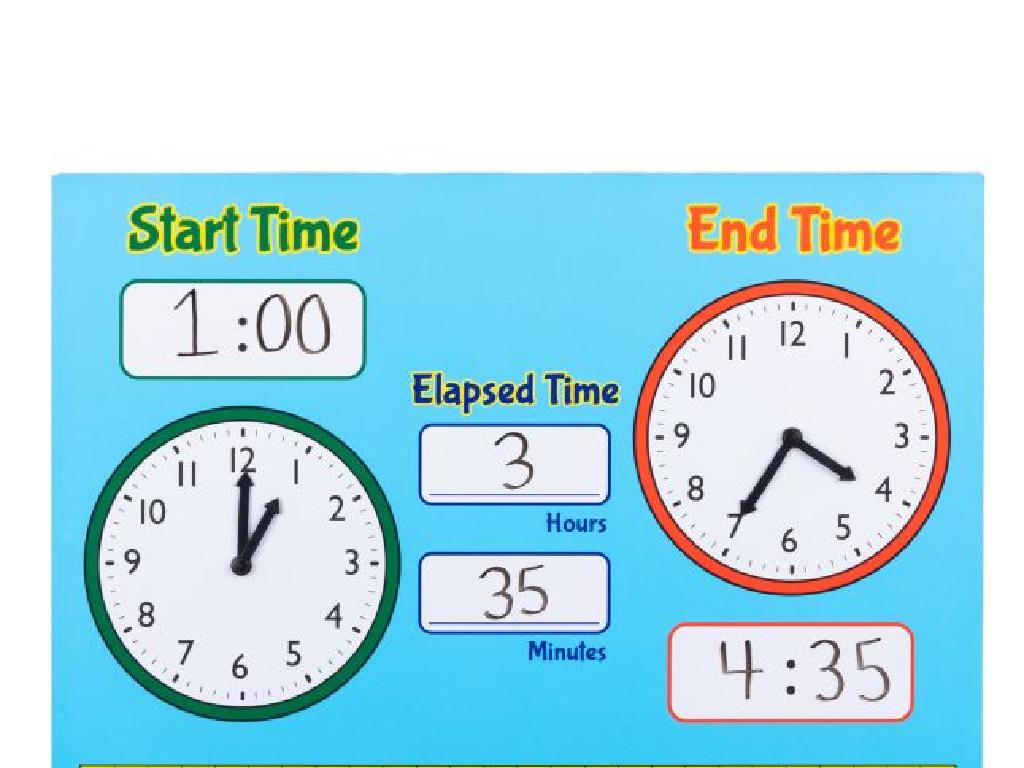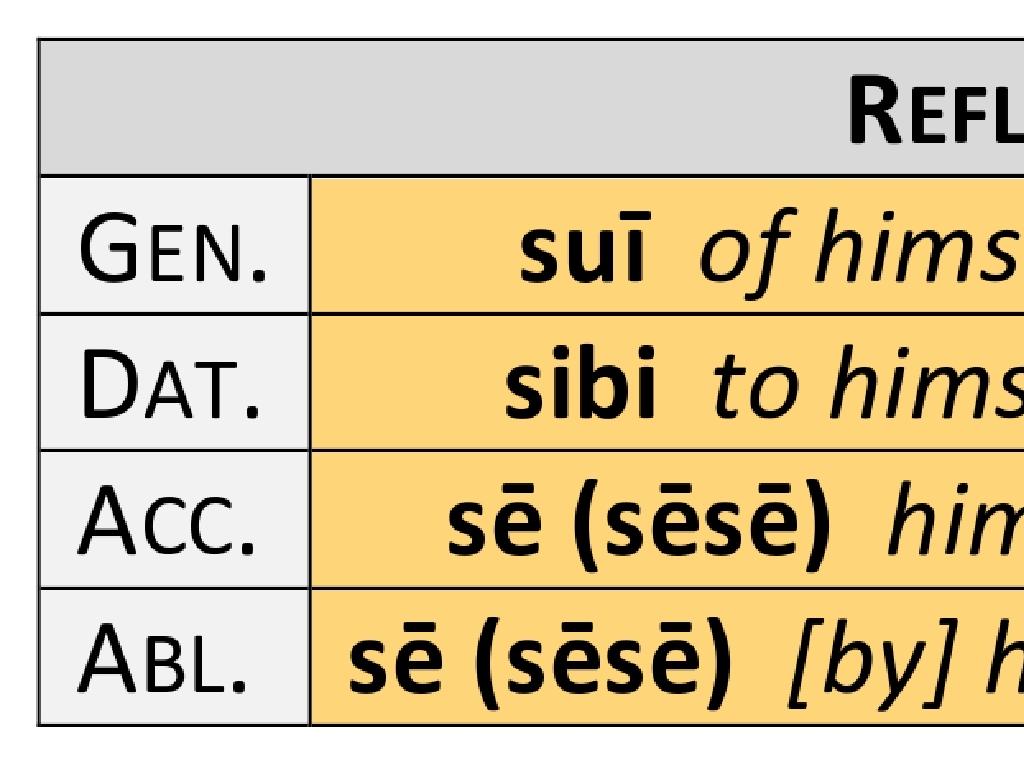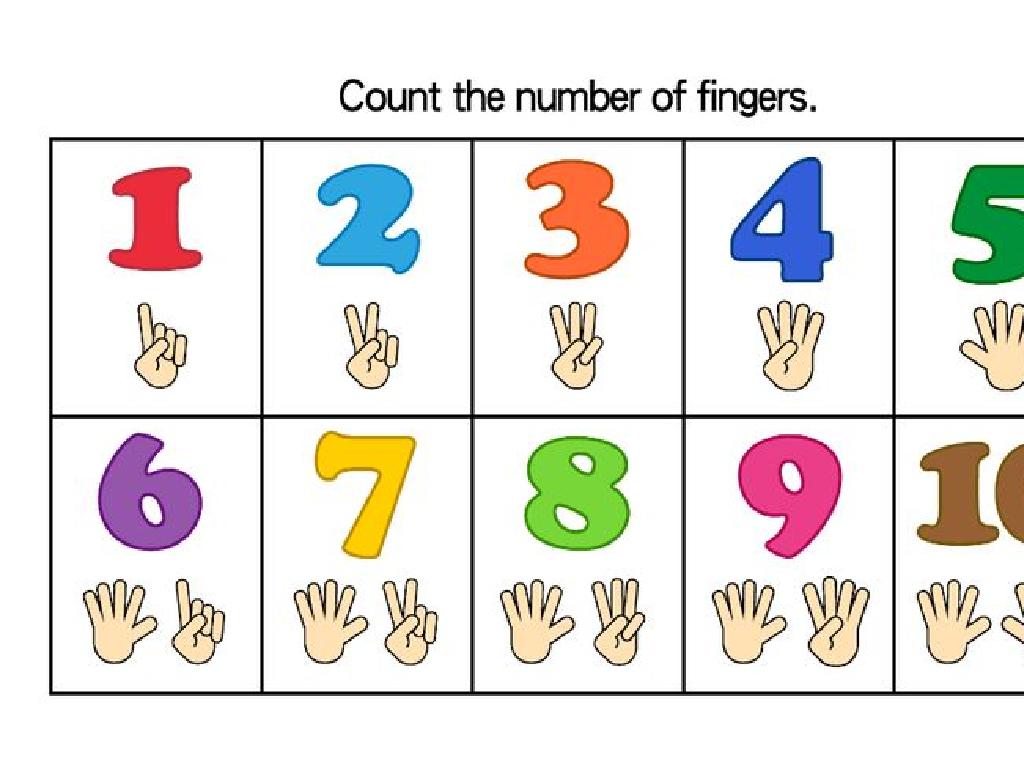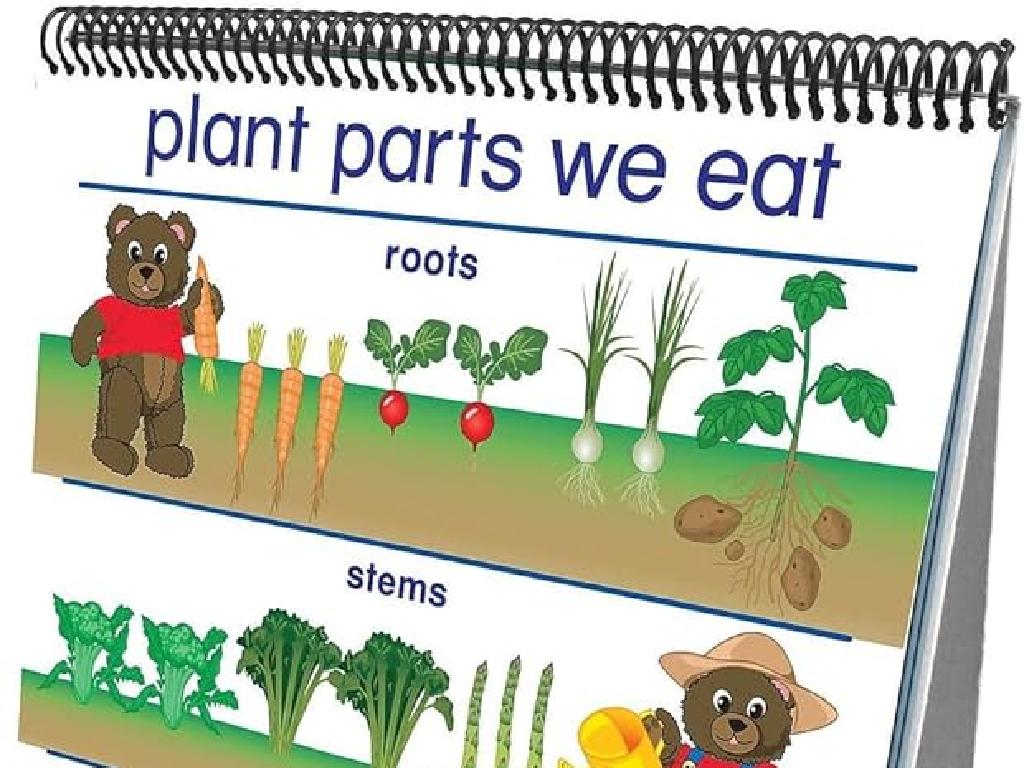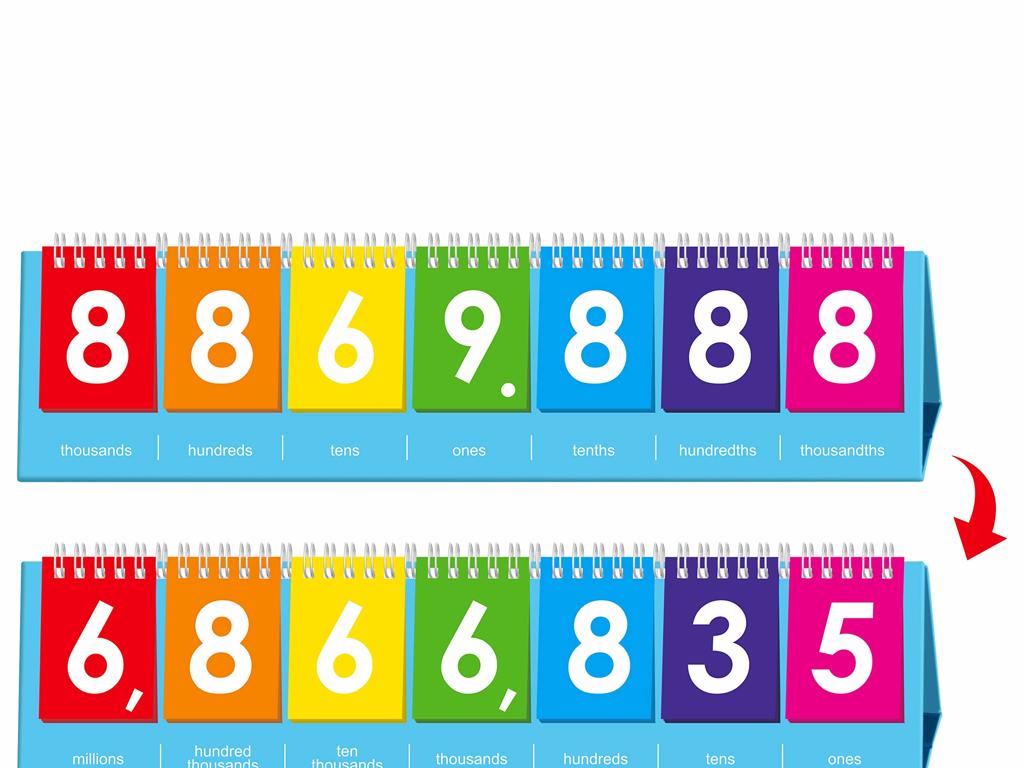Add Two Numbers Up To Four Digits
Subject: Math
Grade: Third grade
Topic: Addition: Four Or Five Digits
Please LOG IN to download the presentation. Access is available to registered users only.
View More Content
Welcome to Addition!
– Greetings, young mathematicians!
– Addition: Combining numbers
– When we add, we find the total of two or more numbers.
– Today’s goal: Add 4-digit numbers
– We’ll practice adding numbers like 1234 + 5678.
– Let’s become addition experts!
|
Begin the class with a warm welcome to set a positive tone for the lesson. Introduce the concept of addition as the process of finding the total when two or more numbers are put together. Emphasize that today’s objective is to learn and practice adding numbers with up to four digits, which is a step up from what they’ve done in the past. Ensure that the students understand the significance of place value in addition and guide them through several examples. Encourage participation and provide praise as they work through problems. By the end of the lesson, aim to have each student comfortable with adding 4-digit numbers.
Understanding Place Value in Addition
– Review place values: ones to thousands
– Align digits by place value
– Stack numbers vertically, matching ones to ones, tens to tens, etc.
– Why place value matters in addition
– Correct alignment ensures accurate addition
– Example: Adding with place value
– 1234 + 5678: Align the thousands, hundreds, tens, and ones before adding
|
Begin with a quick review of place value, ensuring students remember the value of ones, tens, hundreds, and thousands. Emphasize the importance of aligning numbers by their place values when adding, as this is crucial for accurate calculations. Explain that each digit has a value based on its position, and when we add numbers, we must add each place value separately. Use an example on the board to show proper alignment and addition step by step. For instance, when adding 1234 and 5678, demonstrate how to line up the digits according to place value before summing them. This will help students avoid common mistakes and build their confidence in adding larger numbers.
Adding Numbers Without Regrouping
– Understand adding without regrouping
– Example: 1234 + 1111
– No carrying over. Each column adds up to 2 or less.
– Step-by-step board demonstration
– Show how to add each column starting from the right
– Try a practice problem: 2345 + 1234
– Write this problem down and solve it step by step.
|
This slide introduces students to the concept of adding multi-digit numbers without the need for regrouping. Start by explaining that regrouping is not needed when the sum of each column is less than 10. Use the example 1234 + 1111 to illustrate this, adding each column starting from the rightmost digit. Emphasize that they can add each digit separately because there’s no need to carry over to the next column. After the demonstration, give the students a practice problem, 2345 + 1234, to work through independently, reinforcing the concept. Walk around the classroom to assist and ensure understanding.
Adding With Regrouping
– Understanding regrouping
– Regrouping is carrying over numbers to the next place value.
– Step-by-step addition with regrouping
– Add the ones, carry over if it’s 10 or more, then add the tens.
– Let’s practice together
– Solve & share your answers
|
This slide introduces the concept of regrouping, which is a fundamental skill in addition when sums exceed the value of one place (e.g., when the sum of the ones place is 10 or more, we regroup to add to the tens place). Start with a clear explanation of regrouping, often referred to as ‘carrying over’. Demonstrate this process with a few examples, ensuring to show the carrying over step visually. Then, move on to class practice where students can try adding numbers with regrouping under your guidance. Encourage students to work through problems and share their answers with the class to foster a collaborative learning environment. Provide additional examples for students to work on as homework to reinforce the day’s lesson.
Let’s Practice Together: Adding Big Numbers!
– Interactive addition examples
– We’ll add numbers like 1234 + 5678 together!
– Solve on your whiteboards
– Show your answers and how you got them.
– Discuss our solving strategies
– Talk about how you add big numbers.
– Learn from each other’s methods
|
This slide is for an interactive class activity focused on adding two numbers up to four digits. Begin with guided examples on the board, then allow students to try similar problems on their whiteboards. Encourage them to solve the problems independently, then discuss as a class. Highlight different strategies, such as starting from the rightmost digit and carrying over, or breaking the numbers into thousands, hundreds, tens, and ones. This activity will help students understand that there are multiple methods to reach the same answer and that they can learn from each other’s approaches. Possible activities: 1) Pair students to solve problems together, 2) Create a game where correct answers earn points, 3) Have a ‘strategy share’ session where students explain their methods, 4) Use manipulatives like blocks to represent the numbers physically, 5) Incorporate a timed challenge to add a fun competitive element.
Word Problems: Applying Addition Skills
– Solve real-world problems
– Use addition to find answers to everyday questions.
– Read and solve together
– We’ll do a word problem as a class to learn.
– Understand the question
– Look for keywords that tell us it’s an addition problem.
– Tips for tricky problems
– Break down the problem into smaller parts if it’s hard.
|
This slide is aimed at helping students apply their addition skills to solve word problems, which are math questions written in sentence form. Start by explaining that word problems can describe real-life situations where addition is needed. Then, read a word problem aloud and solve it as a class, demonstrating how to identify important information and keywords like ‘total’, ‘altogether’, or ‘combined’. Offer tips for understanding the question, such as underlining the numbers and important details, and rephrasing the problem in their own words. If students encounter difficult problems, teach them to break the problem down into smaller, more manageable parts. Encourage students to practice with a variety of word problems to become comfortable with the concept.
Independent Practice: Adding Big Numbers!
– Work on addition problems solo
– Use class strategies for adding
– Remember to line up the digits and carry over if needed
– Teacher will help if you’re stuck
– Show your understanding of addition
|
This slide is for the independent practice activity where students will apply what they’ve learned about adding numbers up to four digits. Provide a worksheet with a variety of problems, some straightforward and others more complex to challenge different skill levels. Encourage students to use strategies such as lining up numbers by their place values and carrying over. As they work, walk around the classroom to offer support, answer questions, and gauge each student’s understanding. This activity will help solidify their skills in addition and prepare them for more advanced math concepts. Possible activities could include adding up items on a pretend shopping list, calculating the total number of days in several weeks, or combining the scores of two teams in a game.
Review and Share: Adding Four-Digit Numbers
– Recap today’s key addition points
– Share your addition strategies
– How did you solve the addition problems?
– Discuss solutions together
– Let’s look at different ways we found the sum
– Address any final questions
– Any parts of adding big numbers still tricky?
|
This slide aims to consolidate the learning from the lesson on adding four-digit numbers. Begin by summarizing the main points, such as aligning numbers correctly and carrying over. Then, invite students to share the methods they used to solve the problems, fostering a collaborative learning environment. Encourage them to explain their thought process, which can help others understand different approaches. Review a few examples as a class to ensure everyone is on the same page. Finally, open the floor for any lingering questions or uncertainties students may have, ensuring they leave the class with a solid understanding of the concept.
Class Activity: Addition Relay Race
– Divide into teams for relay
– Solve problems to move forward
– Each correct answer takes the team one step ahead
– Emphasize teamwork
– Aim for accurate addition
– Double-check work for mistakes
|
This activity is designed to make learning addition fun through a relay race. Start by dividing the class into small teams, ensuring an equal number of participants per team. Set up a course in the classroom or outside where each team member must solve an addition problem before the next member can proceed. The focus should be on working together and getting the right answers rather than just speed. Provide a variety of addition problems up to four digits to challenge the students. Encourage teams to strategize on the best way to help each other and ensure accuracy. Possible variations of the activity could include using flashcards, whiteboards, or paper for solving problems; incorporating obstacles or physical activities between problems; or having a ‘baton’ that contains the next problem to solve. The goal is to reinforce addition skills while promoting teamwork and engagement.
Conclusion & Homework: Mastering 4-Digit Addition
– Recap on adding 4-digit numbers
– Homework: Addition practice worksheet
– Complete the worksheet with different 4-digit addition problems.
– Celebrate your hard work today!
– Your effort in learning to add big numbers is awesome!
– Keep practicing and ask questions!
– Practice makes perfect, and it’s okay to seek help if you’re stuck.
|
As we wrap up today’s lesson on adding four-digit numbers, provide a brief summary highlighting the steps of column addition and carrying over numbers. For homework, distribute a worksheet with a variety of four-digit addition problems to reinforce the day’s lesson. Offer words of encouragement to acknowledge the students’ efforts and participation during the class. Remind them that practice is key to becoming confident in adding larger numbers and that it’s always okay to ask for help if they encounter difficulties while completing their homework.

